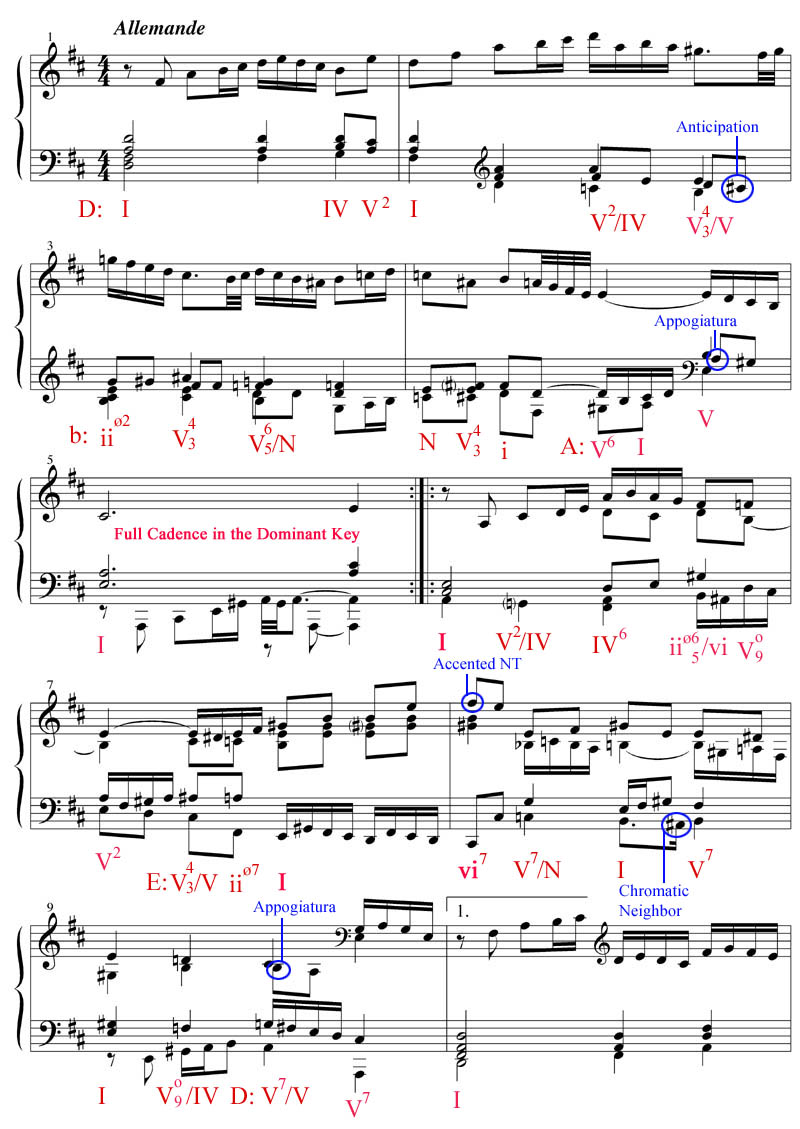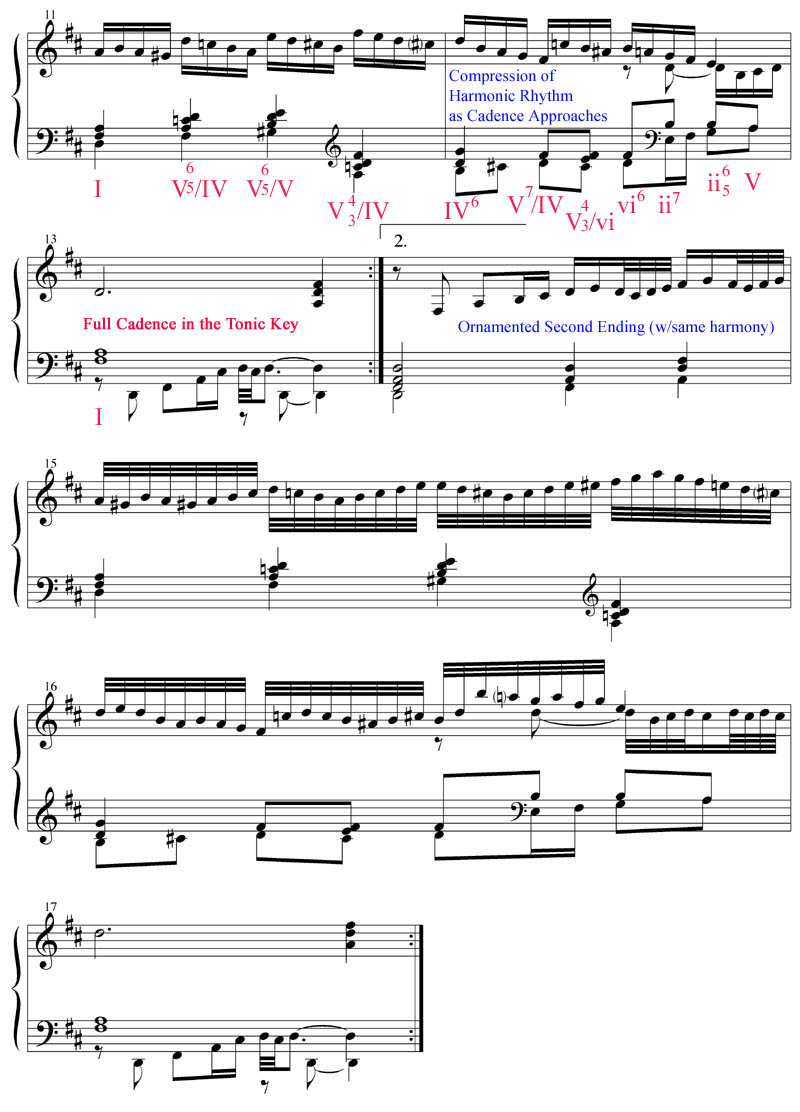B. Allemande
In the following example, we will compose a three voice Allemande in a major key. The principles involved are largely the same as with the Minuet, except since we are in a major key, the A section will conclude with a modulation to the dominant and the B section will begin in the dominant and modulate back to the tonic. In addition we will experiment with the usual binary structure in two ways: a) the A and B sections will be asymmetrical, with the B section being somewhat longer and developmental in content; and b) the B section will have a first and second ending wherein they will both possess an identical harmonic progression, but with the second ending having a more ornamental texture.
Regarding the teaching of composition in general, it remains an important aspect of the learning process for the student to be encouraged to experiment within a particular musical vocabulary once the foundations of that style have been well established. After all, this is what distinguishes every significant composer throughout the history of Western music. Therefore, with this in mind, our piece will employ some unique harmonic progressions, each built on relationships falling well within the language of the Common Practice.
Since the manner and materials of the binary form have been explained during the study of our model Minuet, we will comment here only on those points of interest that depart from what we already understand.
Points:
1. Despite the fact that the tonic and dominant are the pivotal key regions in a traditional binary form composition, intermediate key regions should not be avoided. Notice in the A section the piece briefly modulates to the relative minor, while the B section (which begins in A major) temporarily modulates to its own dominant of E major before eventually returning to the tonic.
2. In bar two the V/IV should of course resolve to IV (G major triad), however, although the following chord is yet another secondary dominant, it does contain a B, D, and a chromatically altered G(#).
3. As well, this next secondary dominant refuses to resolve to the expected sonority of V (A major triad). Instead, it creates a transition to the relative minor by using the B, E, and anticipatory C# as common tones to the iiø2 of the new key region.
4. A secondary dominant to an altered chord can create a unique moment in the perception of the listener. Here we have employed a secondary dominant to the Neapolitan (bII), which in turn emphasizes the resolution to the dominant in bar five.
5. A dramatic moment is created as the downbeat of bar eight is approached through contrary motion between the left and right hands. This moment is emphasized by the fact that the climax note of F# is a dissonance.
6. The interlocking sequences in bars ten and eleven culminating a series of secondary dominants create the most sustained point of drama in the piece, leading to a compression of the harmonic rhythm and eventual coda.
7. The elaborate second ending is prepared and executed in stages. The use of sixty-fourth notes has already been established in the A section, albeit only briefly. Therefore, we reintroduce it gradually, mixed in with other note values in bar fourteen, before allowing them to flow freely in the final flourish. If we compare bar eleven to fifteen, we notice that the original sequence has large leaps between each beat. This allows us to fill in those spaces in the second ending when all the note values have been halved. Also note that the high 'a' towards the end of bar fifteen is used to set up the climax of the B section in bar sixteen with the single high 'b'. The 'b' is emphasized even more through its preparation through leap rather than the steps that have been defining the passagework up to this point.
mp3 download (piano version)




